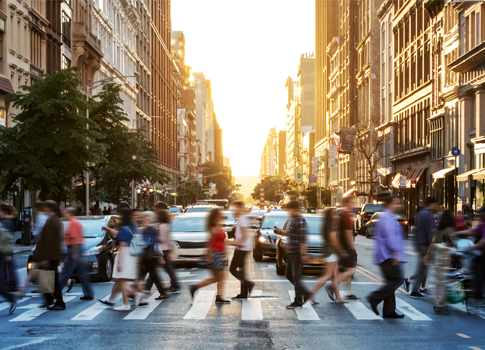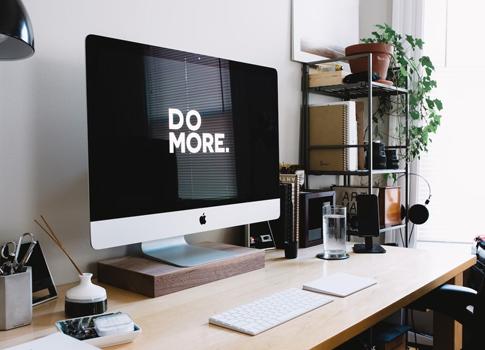After a long series of lockdowns, our lives are now once again being disrupted as we move away from our homebased lifestyle imposed on us by the pandemic and new behaviours form.
Some brands have grown substantially during lockdown by offering ease and comfort to many people, for instance entertainment and food subscription brands such as Netflix and Gousto have been able to tap into the ‘lockdown’ market. But as we move into post-lockdown life, with many of us trying to reset to a hybrid balance of home and office working, how will this new lifestyle impact consumer behaviour and shopping habits? And how can brands navigate this and seize the opportunity it presents?
In a collaborative webinar with Initials, which can also be listened to via our podcast, we explored exactly this focusing on working & commuting, shopping & retail, cooking & food, and socialising & entertaining.
The impact of life events on behaviour
In a way, coming out of lockdown is a lot like a life event. Existing habits can become destabilised and new routines can be created allowing for new behaviours to develop and new brands to be adopted.
For instance, when people get married, they’re four times more likely to buy a new car. This means consumers could adopt new behavioural patterns as they come out of lockdown, with brands being able to capitalise on this over the next 3 to 6 months.
Creating new habits
45% of the activities that people undertake every day are habitual, and over the last year and more, our habits have been massively disrupted. We don’t fully know what the long-term impact will be on consumer habits, but brands should see the next 6 months as a huge opportunity to re-engage consumers.
One way to encourage behavioural change is by piggybacking onto an existing consumer habit. A campaign for The London Fire Brigade did this successfully by getting people to check their fire alarms at the same time people would move their clocks forward and back. By adding this onto an existing behaviour, it became a lot easier for consumers to turn this into a habit.
However, something significant about us coming out of lockdown is that our habits have been destabilised. This means that now more than in previous years, it will be easier to encourage consumers to pick up an entirely new habit without even piggybacking.
Looking at the shopping and retail sector, a sector that was extremely habitual. Picking up food on the way home may have been a daily occurrence but for many this changed through lockdown, panic buying encouraged people to shop outside of their usual shopping lists, and many turned to online shopping.
As consumer’s head back to pre-lockdown life, we may see these changes occurring again. Whether that’s because they are branching out from their local supermarkets or have less time in the evening due to their commute, consumer’s may be looking for different types of products that fit in with this new routine.
With 31% of people saying they prefer shopping in store rather than online, now is the time to make sure your brand is present to help encourage any potential behavioural change, such as relaunching a product or increasing your advertising spend to stay top of mind.
Relationship changes
Aside from just tapping into people’s habits, brands need to understand consumer’s relationships with them and if they have changed since Covid.
Covid has led to a lot of people using brands more for convenience and comfort, or as a new need during this specific time. For instance, subscription brands grew in popularity over lockdown with people staying in more, with time spent on services such as Netflix and Amazon Prime Video almost doubling in 2020, and services such as subscription food boxes became a great way for people to receive fresh ingredients to their door. But with people no longer confined to their homes and forced to spend their evenings on their sofa, how can these types of brands keep their appeal?
It is important for brands to justify their continued role in consumer’s lives as we move into a more hybrid lifestyle. There will be new opportunities for brands to tap in to, for instance those still using their subscription services may want a more flexible plan, or one that can be frozen with less notice. Meal subscription brands could think of offering quicker recipes or including lunches that could be eaten on the go rather than needing to be cooked from scratch. Think about how your brand can support consumer’s lifestyles coming out of lockdown, and in turn continue to be a relevant product in their lives.
Barriers brands may face
In Europe, the UK has seen the highest number of people who’ve been able to save. With 33% of people in the UK saying that they’ve been able to save during lockdown, there is a significant group of people with a higher disposable income and will be looking forward to being able to splurge again.
However, consumer’s feelings on coming out of lockdown are not uniform. Although some people have been able to save, others have had to cut back on their spending, or have had to borrow to get through lockdown. So how can you create a space that consumers see as worth the expense for the masses?
Aside from just financial barriers, Covid has created technology barriers for some. For instance, the hospitality and arts sector has relied on apps such as track and trace. If people are less comfortable with technology, then this may discourage them from visiting. Brands need to make sure they are offering different types of support to encourage a wider audience to attend.
Supporting consumers through these barriers will come in many formats and is why brands need to fully understand the demographics of their audience.
More than demographics
Now, a little over a third of people are actively trying new brands. From reasons including not being able to get their usual shopping due to shortage, or having changed jobs and starting a new commute, or maybe consumers are trying different price point products because their finances have changed. But again, it’s a really exciting opportunity for brands whilst these habits are unstable and they have opportunity to remind people why their products are relevant. Simply, brands need to invest in truly understanding their audience and sectors, and how this has changed since lockdown and will continue to change post lockdown.
In shopping and retail, brands should make sure they are creating messages to target multiple audiences and demographics. For the ‘splurgers’ excited to get back to the shops, brands need to capture that excitement of shopping to encourage an even more positive association.
With those audiences that are more anxious, brands should look to create targeted messaging about the safety regulations and explain the risk assessments taking place, helping to put them at ease and in turn encourage them to visit. Although it may be tempting for companies that have been starved of income for the past 18 months to make their venues as busy as possible, they need to weigh up making the most of this opportunity, but also providing a safe environment that will in turn encourage the more nervous attendees.
Brands can also use search data to their advantage and delve into customers search activity. Are they looking at opening times for busy shopping centres, or places further out of town that may be a bit quieter? Are people still ordering a lot online to allow them to stay at home, or cancelling their subscription packages? Through search data, brands can fill in these digital gaps and help make sure they are targeting audiences with the correct message.
As we transition from lockdown there is still a lot of uncertainty around how lifestyles will change, however what is clear is that there is a big opportunity for brands to take advantage of these changing behaviours and how they can influence them over the next 3-6 months.
After a long series of lockdowns, we are at the start of a transition into yet another unchartered life scenario, impacting the office-working middle class in particular, as offices, retail and hospitality open up and consumers begin to experience what the hybrid life of work and home will look and feel like. For brands, this means a whole new set of consumer behaviours, attitudes and occasions to cater to.
Behavioural science research suggests that these moments of change are golden opportunities for brands to take advantage of, and with new habits taking between 3-6 months to form, brands have a chance to act now to disrupt and entrench new consumer habits before competitors do.
The importance of integrated strategic thinking from media and creative cannot be overemphasised, and in this recorded webinar our head of strategy, Will Hanmer-Lloyd and Josh Tilley, senior strategist at Initials, discuss how brands can capitalise on this, covering:
- How brands can strategise to win the consumer in flux, securing a place in their new purchasing habits and lifestyles
- How the new WFH / office hybrid will impact: convenience, subscription and food brands
- How cooking, food delivery, social occasions and leisure time will evolve






